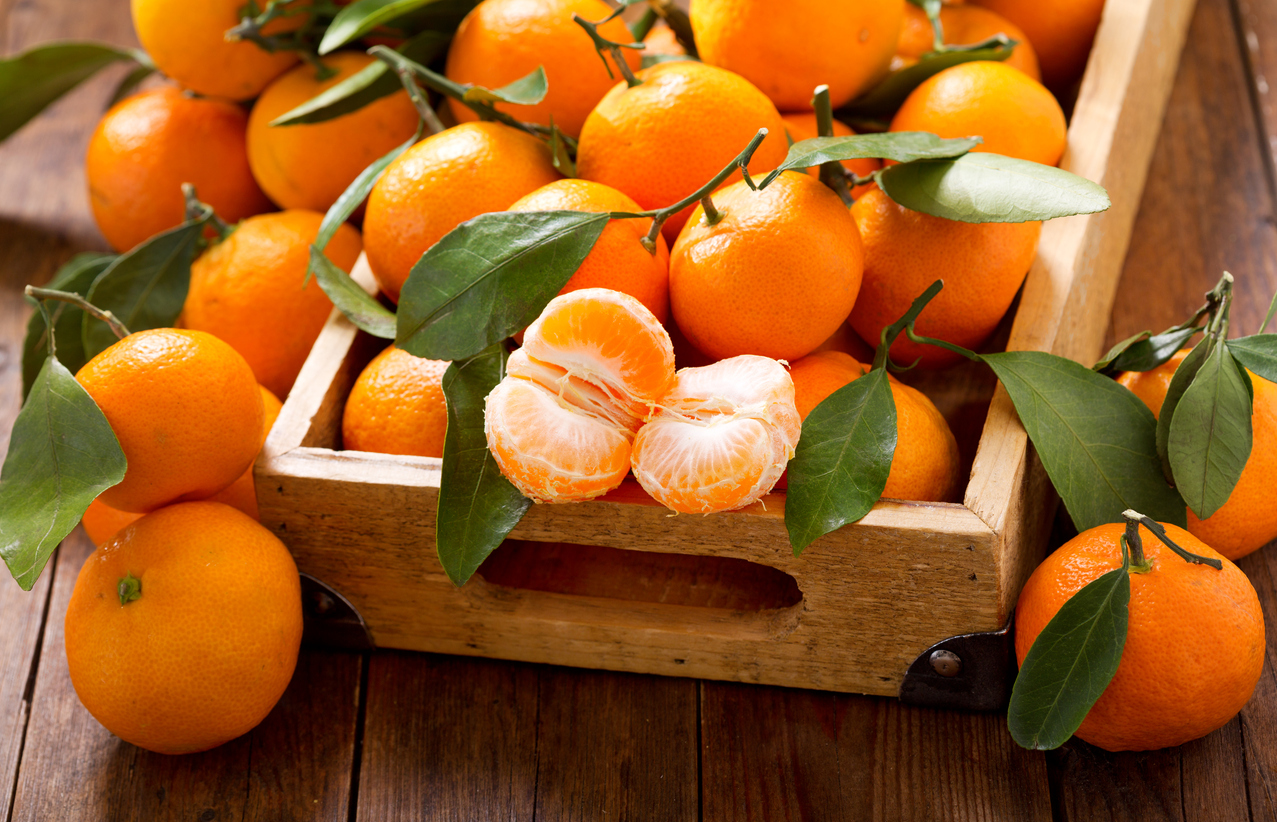Why are Clementines Disappearing? The 2024 Crisis Explained
Why are Clementines Disappearing? The 2024 Crisis Explained
Attention fruit lovers and citrus enthusiasts! Have you noticed something peculiar happening in the produce section lately? The once-abundant shelves of juicy, vibrant clementines seem to be mysteriously vanishing before our very eyes. Yes, you heard it right – there is a crisis unfolding in the world of citrus fruits, and we’re here to unravel the truth behind this unexpected phenomenon. Join us as we embark on an investigative journey into why our beloved clementines are disappearing and explore the shocking revelations that await us in 2024. Brace yourselves for a thrilling ride through orchards, global markets, and perhaps even some conspiracy theories. Get ready to peel back the layers of this juicy mystery – your zest for knowledge is about to skyrocket!
Introduction to the Clementine Shortage of 2024
In 2024, the world was hit with a sudden and unexpected shortage of clementines, leaving many consumers confused and frustrated. This shortage was unlike any other in recent years as it seemed to affect nearly every country that produced or imported clementines. But what caused this crisis? And why did it happen so suddenly?
To understand the clementine shortage of 2024, we must first look at the history of this popular citrus fruit. Clementines are a type of mandarin orange that originated in Algeria in the early 20th century. They quickly gained popularity due to their sweet taste and easy-to-peel skin. Today, clementines are grown all over the world, with major producers including Spain, Morocco, Turkey, and China.
For many years, clementine production and consumption were relatively stable. However, in recent years there has been a growing demand for healthier food options and an increase in global trade has made clementines more accessible to consumers around the world. As a result, the demand for clementines has skyrocketed.
Unfortunately, this sudden surge in demand coincided with several factors that led to the clementine shortage of 2024. Firstly, there were unfavorable weather conditions in some major producing countries such as Spain and Morocco which affected crop yields. Additionally, climate change has also played a role in disrupting traditional growing seasons and causing unpredictable weather patterns.
What Are Clementines?
Clementines are a type of citrus fruit that belong to the mandarin orange family. They are small, seedless, and easy to peel, making them a popular snack among both children and adults. Clementines are typically in season during the winter months, from November to January. They originated in China and were named after Father Clément Rodier, who first discovered them in Algeria in the late 19th century.
These fruits have a bright orange exterior with a smooth, glossy skin and are known for their sweet and juicy flesh. The taste of clementines is similar to that of oranges but slightly sweeter and less acidic. They also have a thin membrane between each segment which makes them easier to eat compared to other citrus fruits.
One of the main reasons for their popularity is their convenience – they can be easily peeled by hand without any mess or fuss. This makes them a great on-the-go snack option for busy individuals or as a healthy addition to lunch boxes. Additionally, clementines are rich in vitamins C and A, along with essential minerals like potassium and calcium.
However, despite their many benefits, there has been a recent decline in the availability of clementines worldwide. This crisis has been attributed to various factors such as climate change, diseases affecting citrus trees, labor issues in producing countries, and changing consumer preferences.
Why Are They Disappearing?
There are a variety of factors that contribute to the disappearance of clementines, also known as mandarin oranges. These sweet and seedless fruits have become increasingly popular in recent years, making their decline even more concerning. In this section, we will explore the main reasons why clementines are disappearing and the crisis surrounding their availability.
1. Climate Change:
One of the primary reasons for the decline in clementine production is climate change. This phenomenon has led to unpredictable weather patterns, including extreme temperatures and irregular rainfall, which can significantly impact citrus crops. Clementines require warm temperatures with a few cooler months to thrive, but climate change has caused heatwaves and droughts that affect their growth and production.
2. Citrus Greening Disease:
Another major factor contributing to the disappearance of clementines is a disease called Huanglongbing (HLB), also known as citrus greening disease. It is caused by bacteria that attack the tree’s vascular system, ultimately killing it within just a few years. This disease has significantly affected clementine orchards worldwide, leading to a decrease in fruit yield and quality.
3. Competition from Other Citrus Varieties:
Clementines face competition from other citrus varieties such as oranges and grapefruits, which are more widely produced globally due to their longer shelf life and larger size. As these citrus fruits are easier to transport and store compared to clementines, they have become more profitable for growers.
4. Labor Shortage:
The harvesting
– Climate Change and Weather Patterns
Climate change is a pressing global issue that has significant impacts on our environment, including the disappearance of clementines. Clementines are small, sweet oranges that are popular during the winter months and have been disappearing from store shelves in recent years. This can be attributed to changes in weather patterns caused by climate change.
One of the key effects of climate change on weather patterns is an increase in extreme weather events such as heatwaves, droughts, and heavy rainfall. These extreme events can have devastating consequences for agricultural crops like clementines. For example, excessive heat can cause the fruit to dry out and fall prematurely from trees before they are ripe enough to be harvested.
Additionally, changing weather patterns can also disrupt the delicate balance required for citrus trees to produce healthy fruit. For instance, clementine trees require a certain amount of cold temperatures during their dormant period in order to produce high-quality fruit. However, with the rise in global temperatures, many regions where clementine trees are grown are experiencing milder winters, which can negatively impact fruit production.
Moreover, climate change has also led to changes in precipitation patterns around the world. In some areas where clementine trees thrive, there has been a decrease in rainfall or even prolonged periods of drought. This creates challenges for farmers who rely on natural irrigation systems and may result in smaller or lower quality fruits.
– Pests and Diseases
Pests and diseases are major contributors to the decline of clementines in recent years. These tiny citrus fruits may be small, but they are highly vulnerable to a wide range of pests and diseases that can devastate entire crops.
One of the most destructive pests for clementine trees is the Asian citrus psyllid. This small insect feeds on the leaves and stems of clementine trees, causing them to wilt and eventually die. But even more concerning is that this pest can also carry a deadly disease known as Huanglongbing (HLB), also called citrus greening. HLB is caused by a bacterium that attacks the vascular system of the tree, eventually blocking nutrient flow and killing it.
Another common pest for clementines is the Mediterranean fruit fly. This insect lays its eggs in ripe fruits, causing them to rot from the inside out. The damage caused by these fruit flies not only affects individual fruits but can also lead to widespread infestations in orchards if not properly controlled.
Aside from pests, clementines are also prone to various diseases that can significantly impact their production. One such disease is Alternaria brown spot, which causes dark lesions on leaves and fruits, leading to premature defoliation and reduced yield. Another disease commonly found in clementine trees is Phytophthora root rot, which attacks the roots and can cause wilting or death of young trees.
– Changes in Global Demand and Supply
The global demand and supply for clementines have been undergoing significant changes in recent years, leading to a shortage of these popular citrus fruits. This sudden disappearance has left many consumers wondering why they can no longer find clementines on their grocery store shelves or in their local markets. In this section, we will delve deeper into the factors that have contributed to the crisis and how they have affected the global demand and supply of clementines.
1.1 – Increasing Demand for Clementines
One of the main reasons behind the decline in clementine availability is the increase in global demand for this fruit. Clementines are known for their sweet and easy-to-peel nature, making them a popular snack among consumers worldwide. In recent years, there has been a growing trend towards healthier eating habits, with more people opting for fresh produce over processed snacks.
Furthermore, as globalization continues to connect different parts of the world, there is a higher demand for exotic fruits like clementines in countries where they were previously not widely available. This surge in demand has put pressure on suppliers to meet the needs of new markets while maintaining their existing customer base.
1.2 – Weather-Related Challenges
Another factor contributing to the shortage of clementines is extreme weather conditions affecting major producing regions such as Spain and Morocco. These two countries account for more than 80% of global clementine production. Changes in temperature patterns due to climate change have led to reduced yields and poor quality crops in recent years.
Impact on Farmers and Consumers
The disappearance of clementines has had a significant impact on both farmers and consumers. In recent years, there has been a decline in the production and availability of clementines, causing concern for those who rely on this fruit as a source of income or as a favorite snack.
For farmers, the decrease in clementine production has resulted in financial losses and uncertainty about their livelihoods. Clementines are typically grown in Mediterranean countries such as Spain, Morocco, and Turkey. However, these regions have faced extreme weather conditions in recent years, including droughts and heavy rains, which have negatively impacted clementine crops.
As a result of these weather challenges, many farmers have experienced lower yields or even complete crop failures. This not only leads to financial losses but also affects their ability to meet market demand for clementines. Additionally, some farmers have had to resort to using more expensive irrigation methods or investing in new technology to combat the effects of climate change on their crops.
Moreover, with fewer clementines being produced, there is also an increase in competition among farmers for limited supply. This can drive up prices for consumers and make it challenging for smaller-scale farmers to compete with larger commercial farms that can afford modern farming techniques.
Alternatives to Clementines
1. Alternatives to Clementines
Clementines have become a popular choice for many people as a quick and easy snack, with their sweet and tangy flavor and convenient size. However, with the current crisis affecting their availability, it’s important to know about some alternative fruits that can satisfy your clementine cravings.
Here are some options that you can try:
1. Satsumas: Similar in appearance and taste to clementines, satsumas are a close relative of the mandarin orange family. They have a bright orange skin that is easy to peel and a juicy flesh that is slightly sweeter than clementines.
2. Tangerines: Another member of the mandarin orange family, tangerines have a thinner skin compared to clementines but have a similar sweet yet tangy taste. They also tend to be seedless which makes them an ideal option for snacking on-the-go.
3. Kumquats: If you’re looking for something more unique, kumquats could be your go-to alternative for clementines. These small citrus fruits are often described as “edible jewels” due to their tiny size and oval shape. Their skin is edible and has a tart flavor while the flesh inside is sweet.
– Other Citrus Fruits
Citrus fruits are a popular and essential part of our diets, providing us with essential vitamins, minerals, and antioxidants. While clementines may be the beloved citrus fruit of choice for many, there are plenty of other delicious options that often get overlooked.
1. Oranges:
Oranges are one of the most well-known and widely consumed citrus fruits in the world. They come in various sizes and varieties such as navel oranges, blood oranges, and Valencia oranges. Oranges are rich in vitamin C, fiber, potassium, and folate. They also contain high levels of antioxidants that help boost the immune system and protect against diseases.
2. Grapefruits:
Grapefruits have a unique tangy-sweet flavor that sets them apart from other citrus fruits. They are packed with vitamin C and provide an excellent source of fiber, potassium, magnesium, and vitamin A. The pink or red varieties contain lycopene which is a powerful antioxidant known for its anti-inflammatory properties.
3. Lemons:
Lemons have a sour taste but offer numerous health benefits due to their high levels of vitamin C and citric acid. They also contain flavonoids which have been linked to reducing the risk of heart disease and certain types of cancer.
4. Limes:
Limes may be small in size but they pack a big punch when it comes to flavor! These bright green fruits are rich in vitamin C like lemons but also offer additional nutrients such as calcium and iron.
– Non-Citrus Fruits
Non-citrus fruits are an important and diverse category of fruits that offer a wide range of health benefits and delicious flavors. While citrus fruits like oranges, lemons, and grapefruits tend to steal the spotlight, non-citrus fruits have their own unique qualities that make them equally valuable.
1. Types of Non-Citrus Fruits
The term “non-citrus” refers to any fruit that does not fall under the citrus family, which includes oranges, lemons, limes, and grapefruits. Some common types of non-citrus fruits include apples, bananas, strawberries, blueberries, grapes, peaches, pears, plums, cherries, mangoes, pineapples, and melons. These fruits come in a variety of colors and sizes and can be enjoyed fresh or used in various recipes.
2. Nutritional Benefits
Non-citrus fruits are packed with essential vitamins and minerals that are important for maintaining good health. For example:
– Apples contain high levels of antioxidants which help prevent cell damage.
– Bananas are rich in potassium which helps regulate blood pressure.
– Strawberries are low in calories but high in vitamin C and fiber.
– Blueberries are known for their anti-inflammatory properties.
– Grapes contain resveratrol which has been linked to heart health benefits.
– Peaches are a good source of vitamin A which is crucial for eye health.
– Pears provide dietary fiber that aids digestion.
Solutions to Address the Shortage
There are a few key solutions that can be implemented in order to address the shortage of clementines. These include increasing production, improving distribution and reducing waste.
1. Increasing Production:
One solution to addressing the clementine shortage is to increase production. This can involve investing in new orchards, utilizing advanced farming techniques, and expanding into new growing regions. Additionally, research and development efforts can be focused on creating new varieties of clementines that are more resistant to diseases or have longer shelf lives. By increasing production, there will be more clementines available for consumers to purchase, helping to alleviate the shortage.
2. Improving Distribution:
Another important aspect of addressing the clementine shortage is improving distribution. This includes streamlining supply chains and investing in transportation infrastructure such as cold storage facilities and efficient shipping methods. By enhancing the distribution process, clementines can reach their destinations faster and with less spoilage, ensuring that more fruit makes it onto store shelves for consumers to purchase.
3. Reducing Waste:
A significant amount of food waste occurs throughout the supply chain from farm to consumer. In fact, according to a report by the Natural Resources Defense Council (NRDC), up to 40% of all food produced in the United States goes uneaten each year. This includes produce like clementines that may go unsold due to overproduction or spoilage during transportation or storage.
– Sustainable Farming Practices
1. Introduction to Sustainable Farming Practices
Sustainable farming practices are methods of agricultural production that prioritize environmental stewardship, economic viability, and social responsibility. These practices aim to minimize the negative impact of farming on the environment while also promoting long-term sustainability in terms of crop productivity and farm profitability.
In recent years, there has been growing concern about the disappearance of clementines from store shelves. This trend has led many consumers and experts to question the sustainability of current farming methods for this popular citrus fruit. In this section, we will dive deeper into sustainable farming practices and their role in addressing the crisis surrounding clementines.
2. The Environmental Impact of Conventional Farming Methods
The conventional farming methods used in commercial agriculture have significant negative impacts on the environment. Intensive use of chemical fertilizers, pesticides, and herbicides can lead to soil degradation, water pollution, and loss of biodiversity. Additionally, large-scale monoculture plantations often result in deforestation and destruction of natural habitats.
These unsustainable practices not only harm the environment but also have long-term consequences for crop production. Overuse of chemicals can decrease soil fertility, leading to decreased yields over time. Furthermore, monocultures make crops more vulnerable to pests and diseases as they lack diversity in their genetic makeup.
–
1. Introduction to the Decline of Clementines
Clementines, also known as mandarin oranges, have been a popular and beloved fruit for many years. Their sweet and juicy flavor, easy-to-peel skin, and seedless nature make them a favorite among consumers. However, in recent years, there has been a significant decline in clementine production globally. This has led to an increase in prices and shortage of supply in many markets around the world.
In this section, we will delve into the reasons behind this crisis and explore how it is affecting both farmers and consumers.
2. The Role of Climate Change
One of the main factors contributing to the disappearance of clementines is climate change. As temperatures rise and weather patterns become more unpredictable, citrus crops are facing challenges such as droughts, floods, heatwaves, and pests. These extreme weather conditions can damage or destroy entire clementine orchards, resulting in lower yields.
Furthermore, warmer temperatures can affect the internal quality of clementines by causing them to ripen too quickly or develop off-flavors. This not only reduces their shelf life but also makes them less desirable for consumers.
3. Disease Outbreaks
Another major issue affecting clementine production is disease outbreaks. In particular, citrus greening disease (also known as Huanglongbing) has devastated citrus crops worldwide since its first appearance in China in 1919.








Comments are closed.